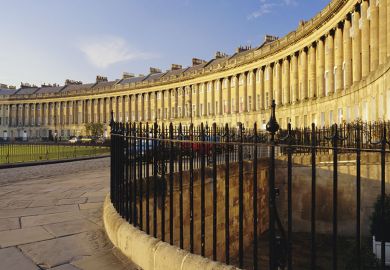In this volume, Allan Doig, historian and theologian, examines well-chosen ecclesiastical buildings from a wide geographical area and two millennia. He outlines their history, archaeology and how they were altered over time as beliefs and usage changed, given that the arrangements of interior spaces reflect how members of congregations responded to contemporary rites and ceremonies.
Doig’s exemplars, each of which reflects differing aspects of Church history and politics, are the Holy Sepulchre, Jerusalem; the Constantinian and later basilicas of St Peter, Rome; Hagia Sophia, Istanbul (now once again a mosque); the cathedral of the Dormition in the Kremlin, Moscow; the church of the Holy Mother of God, Aachen; the abbey-church of Saint-Denis, Paris; God’s House at Ewelme, Oxfordshire; the cathedral inserted within the astonishing Antigua Mezquita in Córdoba; the church of Sant’Ignazio, Rome; George Edmund Street’s Crimean memorial-church, Istanbul; and Basil Spence’s Coventry cathedral.
I have always thought that the loss of the ancient basilica of St Peter on the Vatican Hill was a catastrophe, not only in terms of the destruction of ancient fabric (apart from what survives beneath the present structure, the scale of which, at least to one pair of eyes, is problematic), but because of the financial chicanery involved in raising the wind to pay for the massive Renaissance structure that replaced it. The deals included enormous payments for indulgences under the bull Sacrosanctis Salvatoris (1515), the translation of a 24-year-old to hold two archbishoprics, involving huge fees to the Vatican, and much else. So the replacement of the wonderful old complex was a powerful catalyst in the Lutheran explosion that led to the fracture of the Western Church.
Another replacement church, Coventry cathedral, also seems to me to be problematic, described by some critics as a permanent memorial to the Festival of Britain, frozen in that time and unable to embrace the future. Doig oddly calls the design that was placed third in the competition “more werlitzer [sic] than Gothic, a 1930s modernism”. One of the problems at Coventry was that, even before the start of the 1939-45 war, the team placed in charge of planning the city wanted to pull most of it down anyway and found their task a lot easier when the Luftwaffe did the job for them.
When I compare the glorious rebuilding of the great church of St Elisabeth and the city centre of Wrocław with the limp-wristed Spence cathedral and the feeble centre of Coventry, I can only regret that the wishes of many that the medieval English church should be triumphantly reconstructed were not realised (although I give thanks that the Smithsons’ proposed design for a cathedral that would have seemed to float above the ground got nowhere).
There are some serious problems with this book. It is inadequately illustrated and was not proofread with sufficient care (an identical quotation from Peter Hammond appears on pages 298 and 302). When complex buildings are discussed, the least one would expect are plans; the only ones we are given are of St Peter’s, and these are extremely small at that. Some plates are grotesquely distorted vertically and should have been rejected.
James Stevens Curl received the 2019 Arthur Ross Award for Excellence in the Classical Tradition for History and Writing by the Institute of Classical Architecture & Art in the US. He is also the author of Making Dystopia: The Strange Rise and Survival of Architectural Barbarism (2019).
A History of the Church through its Buildings
By Allan Doig
Oxford University Press, 392pp, £30.00
ISBN 9780199575367
Published 10 December 2020
Register to continue
Why register?
- Registration is free and only takes a moment
- Once registered, you can read 3 articles a month
- Sign up for our newsletter
Subscribe
Or subscribe for unlimited access to:
- Unlimited access to news, views, insights & reviews
- Digital editions
- Digital access to THE’s university and college rankings analysis
Already registered or a current subscriber?








